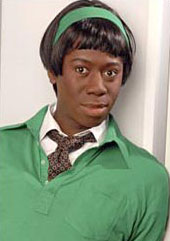

Most lingerie ads still inadvertently cater to the male gaze.īy male gaze, I don’t mean the actual, literal male gaze delivered to you by a dude saying “God bless you” on the street. The PR messaging of the industry has changed. You can’t go one season without some lingerie startup releasing “disruptive” imagery that promises to challenge beauty norms that insists that lingerie is, in fact, for you and not for him (though the assertion that “It’s not for him!” still affirms the straightness of customers). Brands like Victoria’s Secret share their Angels’ hopes and dreams with us brands like Aerie photograph campaigns of conventionally beautiful women un-photoshopped and call it radical. The lingerie industry has a history of hyper-sexualizing women, but the winds seem to be shifting. I got into lingerie because experimenting with lingerie and underthings was a vital part of stepping into my queer identity, and I opened Bluestockings (my store) so that the affirming experience that I had could be open to LGBTQIA+ folks who are often ignored by the industry. This is a question I ask not only as a queer woman inundated with these ads, but as a member of the lingerie industry. This begs the question: Who is the viewer? And who is this eroticism for? The models move to the bedroom and to greater physical intimacy, but they no longer engage with each other as much - they look at the camera, at the invisible viewer, far more often. Wolfhead Undergarmentsīy the 1970s, the implication of substantive intimacy between women in lingerie advertisements is gone. One Maidenform ad shows women taking tea in their underthings.

In the 1950s, there were fewer scenes in the bedroom and more scenes demonstrating activity, conversation, subjectivity, and relationships. With the increasing cultural consciousness of women's sexuality, spurred on by the feminist movement and the sexual revolution of the ’60s and ’70s, homoerotic lingerie advertising became less focused on intimacy between the models and more focused on sexuality. While the novels found an audience in underground lesbian communities, the intended audience was cishet men. While the lingerie ads of the 1950s and ’60s don’t appear to be self-conscious, the body language of lingerie ads bears a marked visual relationship to the covers of lesbian pulp novels of the same era, which contained titillating stories of lesbianism. In the 1950s, women in lingerie ads could lie on beds together and share obviously intimate gazes - and, presumably, no one was the wiser. In part because of strong social taboos and the lack of a framework for understanding homoeroticism, lingerie advertising was able to capitalize on the double entendre, latently playing to homoerotic fantasy. What is remarkable is how consistently erotic lingerie advertising has been - even in the early 20th century, when the LGBTQ+ community was underground and the public did not have a discourse for discussing or interpreting queer relationships. The women in these ads are often in intimate situations: as implicit as lying on chaise lounges or beds, or as explicit as engaging in BDSM. Homoerotic lingerie ads, which date back to 1920, at least, hint at erotic relationships between women. Agent Provocateur, 2000s Agent Provocateur


 0 kommentar(er)
0 kommentar(er)
